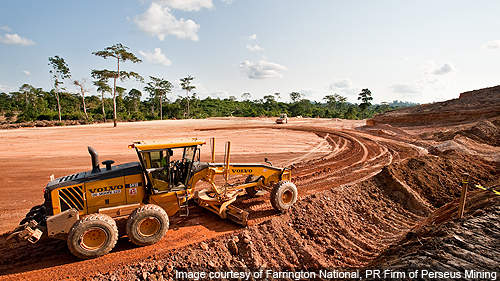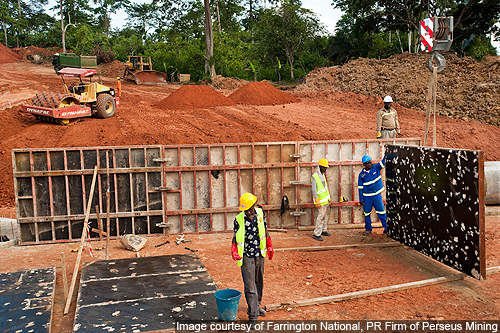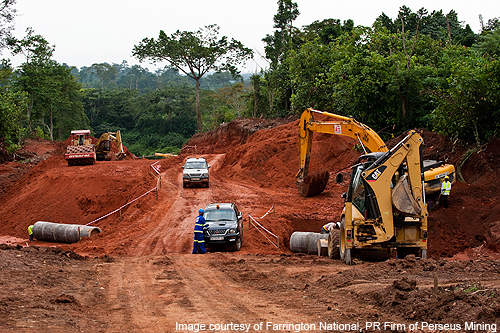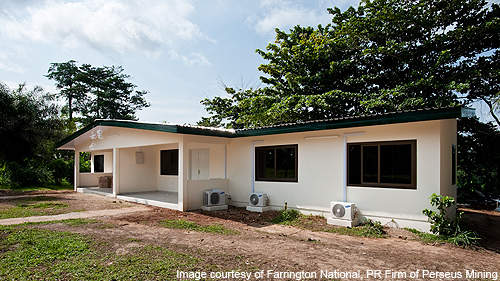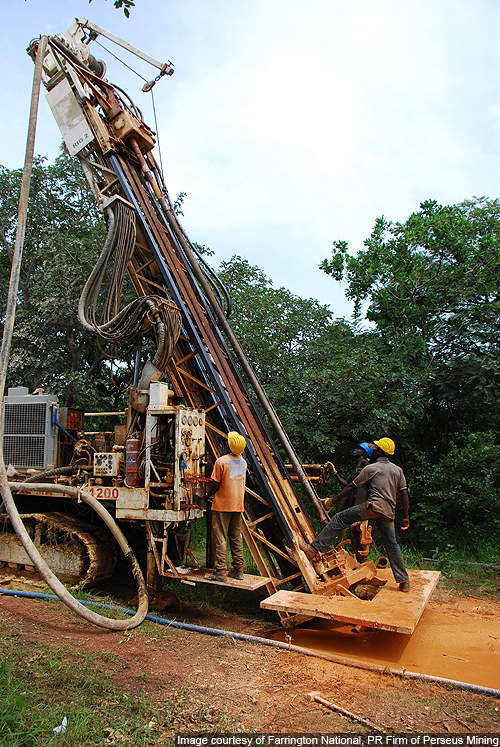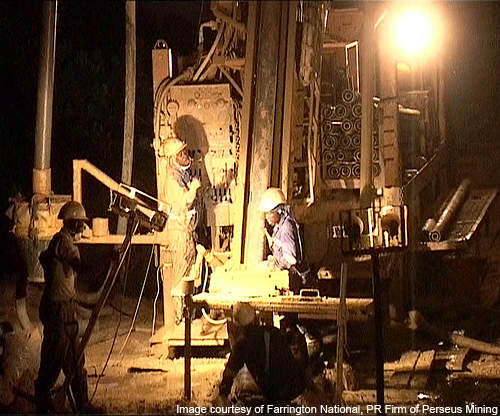Central Ashanti gold mine is located approximately 57km south-west of Obuasi and 195km north-west of Ghana’s capital Accra. Formerly known as the Ayanfuri gold project, the mine produced in excess of 300,000oz of gold between 1994 and 2001. It is owned by Central Ashanti Gold Limited, a wholly owned subsidiary of Perseus, which owns 650km² of tenements on the Ashanti gold belt.
The project’s detailed feasibility study was completed in July 2009. Environmental clearance was received in June 2010. Perseus began construction of the project after receiving approval from the Government of Ghana.
Production from the mine began in August 2011. Commercial production commenced in January 2012. The life of the mine is estimated to be approximately 15 years.
Estimated and proven reserves and geology of the Ghanaian mine area
The mine contains an estimated 18.4Mt of proven reserves graded at 1.4g/t Au and 37.2 Mt of probable reserves graded at 1.1g/t Au. Measured and indicated resources total 29.9Mt graded at 2.1g/t Au. Inferred resources have been estimated to be 62.1Mt at 2.2g/t.
The deposit is hosted within the Man Shield of the Precambrian aged West African Craton. The deposit flanks the western end of the Ashanti greenstone belt along the Obuasi-Akropong gold corridor. Intensely folded and faulted birimian flysch-type metasediments of the Paleoproterozoic age overlie the entire project area.
These sediments are metamorphosed to upper greenschist faces and include dacitic volcaniclastics, greywackes and argillaceous (phyllitic) sediments. Sediments are intruded along multiple regional bodies by a number of small basin-type or Cape Coast-type granite structures.
The intrusions vary in size and shape from 200m to 400m long and 40 to 150m wide egg-shaped plugs, to longer and narrower sills and dike that measure more than 2,000m in length and between 50m and 100m in width.
Regionally, the deposit hosts minor amounts of cherty and manganiferous exhalative sediments. Graphitic schists coincide with the main shear (thrust) zones. Parallel to partially parallel cleavage and bedding follow the regional trend of the 50° striking, steep to near vertical, southeast and north-west dipping Akropong structures.
Mineralisation of the Central Ashanti gold deposit
Gold mineralisation at the mine is found primarily within granite structures. Two or three generations of several, narrow quartz veins host the mineralisation. The quartz veins are associated with nearly three percent pyrite, minor arsenopyrite and lesser amounts of sphalerite, chalcopyrite, galena and rutile.
Gold observed at or near the margins of the veins, occurs as fine grains along the boundaries of sulphide grain or in sulphide fractures. Coarse visible gold is hosted within the quartz. Mineralisation also occurs in shear zones that host the classic Ashanti-style sediments.
Mining and processing techniques used at Perseus’s Central Ashanti gold mine
The deposit is mined using hydraulic excavators ranging in size between 120 and 200t, with a backhoe configuration. Depending on the swell, flitches averaging between 2 x 2.5m are used.
Ore and waste was excavated and loaded within the marked boundaries, thereby ensuring maximum ore recovery with minimum contamination.
Due to the intact strength of the rocks, fresh rocks were blasted heavily. Control blasting techniques including pre-splitting, buffer rows and trimming, were used to minimise the impact of blasting on the slopes.
Mining is carried out to support a mill feed rate of 5.5Mtpa of high grade primary ore. Processing is carried out in a 5.5Mtpa gold processing plant that includes a primary jaw crusher, single stage SAG mill, gravity circuit, flotation circuit, regrind ball mill, concentrate CIL circuit and elution circuit.
Contractors linked to the West African former Ayanfuri gold project
A mining operations contract was awarded to African Mining Services (AMS) Ghana, a subsidiary of Ausdrill. The scope of the contract included site preparation, construction and maintenance of haul-road, loading and transportation of ore to the ROM pad and hauling of waste material to the waste dump.
Perseus undertook the technical services of the project, including planning the mining activities, scheduling of production, grade controlling and ore blending.

